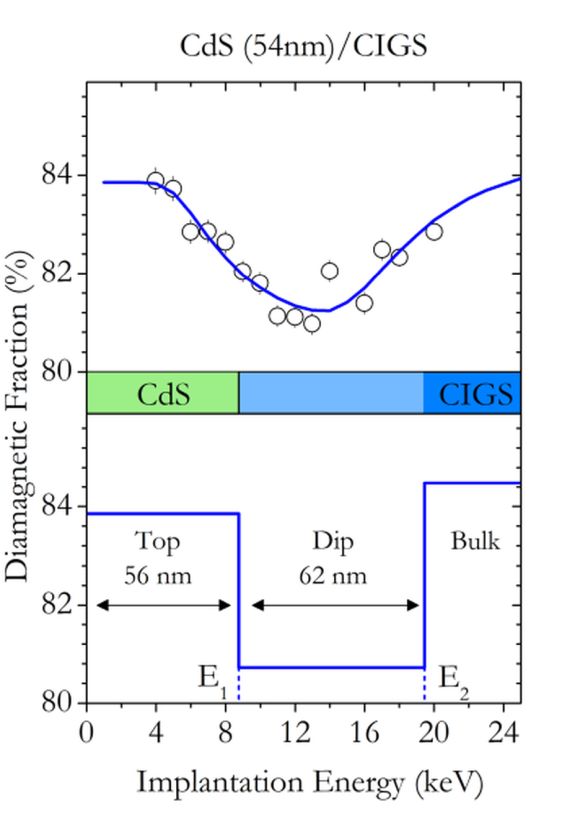Speaker
Description
The slow muons technique provides a quantitative approach to characterize the effect of various cover layers on the passivation of bulk defects near the p-n junction of solar cells 1.
Several cover layers on top of the chalcopyrite Cu(In,Ga)Se2 (CIGS) semiconductor absorber were investigated in this work, namely CdS, ZnSnO, Al2O3 and SiO2.
The figure shows the depth profile of a measurement on a CdS/CIGS sample. The diamagnetic fraction is used as an indication of the perturbation of the lattice at the site of the muon. The lower part of the figure shows the model depth profile obtained after deconvolution of the experimental data with the range distribution function. The dip in the diamagnetic fraction near the interface indicates that the lattice is more perturbed in this near-interface region than further inward in the sample. We find that CdS provides the best defect passivation; the oxide materials are less effective.
1 Alberto, H.V. et al. “Characterization of the interfacial defect layer in chalcopyrite solar cells by depth resolved muon spin spectroscopy”, accepted for publication in Advanced Materials Interface, 2022.


